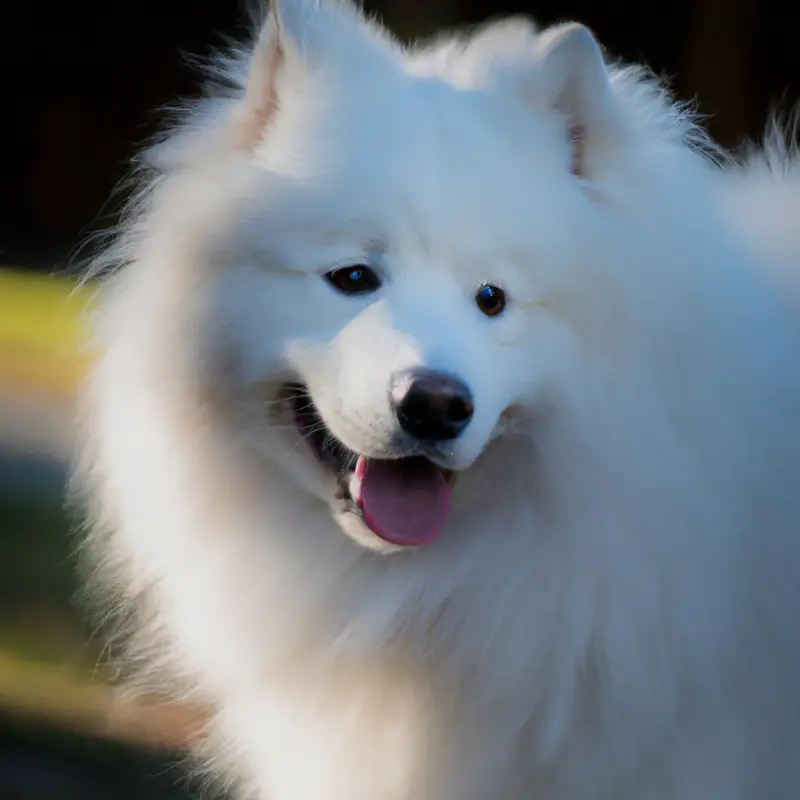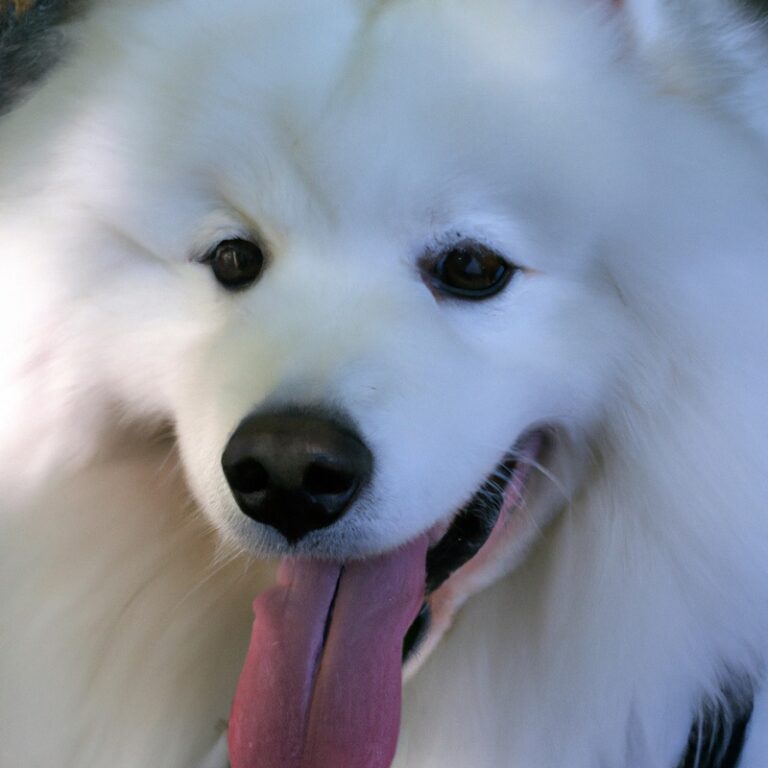Are Samoyeds Easy To Housetrain?
Key Takeaways:
- Samoyeds are generally not the easiest breed to housetrain.
- Consistency and positive reinforcement are key when housetraining a Samoyed.
- Patience and persistence are required to successfully housetrain a Samoyed.
- Crate training can be an effective method for housetraining Samoyeds.
Are you considering adding a Samoyed to your family, but concerned about their housetraining abilities? Well, you’ve come to the right place! As a proud Samoyed owner and experienced dog trainer, I can assure you that housetraining these fluffy, lovable pups is definitely achievable.
Samoyeds, with their friendly and eager-to-please temperament, can be relatively easy to housetrain with the right approach.
In this article, we will explore the unique characteristics of Samoyeds that may affect their housetraining, discuss effective techniques such as consistent routines and positive reinforcement, and provide you with valuable tips to successfully housetrain your Samoyed. Let’s dive in and get those potty habits in check!
| Factors to Consider | Samoyeds |
|---|---|
| Intelligence | High |
| Trainability | Moderate |
| Energy Level | High |
| Inquisitiveness | High |
| Temperament | Friendly and Cooperative |
| Consistency | Important |
| Potty Training Challenges |
|
| Tips for Housetraining |
|
Understanding Samoyeds
Description of Samoyeds
Samoyeds are a beautiful and friendly breed of dog known for their fluffy white coats and smiling faces. They are medium to large-sized dogs, usually weighing between 50 to 60 pounds.
Samoyeds have a sturdy build with strong legs and a bushy tail that curls over their back.
They are known for their friendly and sociable nature, making them great family pets. Their playful and gentle temperament makes them excellent with children.
Samoyeds were originally bred for herding and pulling sleds, so they are energetic and require regular exercise.
They are intelligent and trainable but can be stubborn at times. Their thick double coat requires regular grooming to prevent matting and to keep it in good condition.
Overall, Samoyeds are loyal, affectionate, and make wonderful companions.

Temperament of Samoyeds
Samoyeds are known for their friendly and gentle temperament. They are generally sociable and bond well with their human family.
Samoyeds are good with children and other pets, making them great family dogs.
They are alert and make excellent watchdogs, although they may not be aggressive towards strangers. Samoyeds love being a part of activities and enjoy spending time outdoors.
They are intelligent and can learn quickly, but they can also be independent and stubborn at times.
Early socialization and consistent training are important for a well-behaved Samoyed.

Characteristics that may affect housetraining
Some characteristics that may affect housetraining a Samoyed include:
- Stubbornness: Samoyeds can be independent and resistant to following commands, which may make housetraining a bit more challenging.
- High energy levels: Samoyeds are an active breed and need plenty of exercise. If they don’t get enough physical activity, they may have difficulty holding their bladder and bowels.
- Sensitivity: Samoyeds are sensitive dogs and may not respond well to harsh training methods. Gentle, positive reinforcement is usually more effective for housetraining.
- Social nature: Samoyeds are highly social dogs and may become anxious or stressed if left alone for long periods. This can sometimes lead to accidents indoors.
- Spitz breed traits: As a Spitz breed, Samoyeds have certain instinctual behaviors, such as digging and marking territory. These behaviors may need to be redirected during housetraining.
- Slow maturation: Samoyeds are known to mature at a slower rate compared to other breeds. This may mean they take longer to fully grasp housetraining concepts and may require more patience and consistency.

Housetraining Samoyeds
Crate training for Samoyeds
Crate training can be an effective method for housetraining your Samoyed. Start by choosing the right size crate, ensuring it is large enough for your dog to stand, turn around, and lie down comfortably.
Introduce the crate gradually, using positive reinforcement and making it a positive and safe space for your Samoyed.
Use the crate for short periods of time when you cannot supervise your dog, gradually increasing the duration. Never use the crate for punishment.
Consistency and patience are key when crate training your Samoyed.
Positive reinforcement and rewards
Positive reinforcement and rewards are essential tools for housetraining Samoyeds. When you consistently reward your Samoyed for going to the bathroom outside, they learn to associate this behavior with positive outcomes.
This can be in the form of treats, praise, or playtime.
By providing positive reinforcement, you reinforce the desired behavior and make it more likely to occur again. Rewards serve as motivation for your Samoyed to continue their housetraining progress.
Patience and perseverance in housetraining
Patience and perseverance are essential when housetraining your Samoyed. It can take time for them to understand where they should go to the bathroom.
Stay consistent with your training methods and be patient with accidents.
Reward your Samoyed for going in the right place to reinforce positive behavior. Clean up accidents promptly and thoroughly to prevent your dog from associating that spot with a bathroom area.
With dedication and persistence, your Samoyed will eventually become housetrained.
Tips for Successful Housetraining
Establishing a designated toilet area
Establishing a designated toilet area for your Samoyed is essential for successful housetraining. Choose a spot in your yard that will be easily accessible for your dog.
Take them to this area consistently, especially after meals and naps, using a leash if necessary.
Use a specific word or phrase to associate with going to the bathroom, like “go potty.” Reward your Samoyed with praise and treats when they use the designated toilet area. With time and consistency, they will learn where they should go.
Regular exercise and potty breaks
Regular exercise and potty breaks are key to successful housetraining.
By giving your Samoyed enough physical activity, you can help them burn off excess energy and reduce the likelihood of accidents inside the house.
Additionally, taking regular potty breaks ensures that your Samoyed has the opportunity to relieve themselves outside.
Aim for at least 30 minutes of exercise and several potty breaks throughout the day to establish a routine and promote good housetraining habits.
Monitoring and supervision
Monitoring and supervision is key for successful housetraining. It’s important to keep a close eye on your Samoyed puppy at all times, especially during the early stages of training.
This means staying alert and watching for signs that they need to go outside, such as circling or sniffing the floor.
Regularly taking your puppy out to their designated potty area and rewarding them for going in the right spot will reinforce good habits. Remember, accidents can happen, so be patient and consistent in your monitoring and supervision efforts.
Managing accidents effectively
Accidents happen, especially during the housetraining process. To manage accidents effectively, there are a few steps you can take.
Firstly, try to catch your Samoyed in the act and gently interrupt them by saying “no” and taking them outside to finish.
Secondly, thoroughly clean any soiled areas using an enzymatic cleaner to remove the scent. Thirdly, be patient and consistent with your housetraining routine, offering plenty of opportunities for your Samoyed to go outside.
With time and consistency, accidents will become less frequent.
Frequently Asked Questions about Housetraining Samoyeds
How long does it take to housetrain a Samoyed?
Housetraining a Samoyed can take anywhere from a few weeks to a few months.
It depends on factors such as consistency, patience, and the individual dog’s temperament.
Remember to establish a routine, provide positive reinforcement, and be vigilant in monitoring your Samoyed’s bathroom needs.
Consistency and positive reinforcement are key to successfully housetraining your Samoyed.
Stick to a routine, reward good behavior, and be patient with your furry friend.
In time, they will learn to do their business outside.
What are common challenges in housetraining Samoyeds?
Common challenges in housetraining Samoyeds include their independent nature, susceptibility to boredom, and resistance to confinement. Samoyeds are known for their stubbornness and may require consistent and patient training.
Additionally, their high energy levels can lead to restlessness, making it important to provide them with enough physical and mental stimulation.
Crate training may also be challenging as Samoyeds may dislike being confined. Consistency, positive reinforcement, and a regular schedule can help overcome these challenges.
Can you use pee pads or indoor grass for housetraining Samoyeds?
Yes, you can use pee pads or indoor grass for housetraining Samoyeds. Some Samoyed owners find success with pee pads, which are absorbent pads that can be placed in a designated area for your puppy to use.
Others prefer using indoor grass, which mimics the feel of real grass and encourages dogs to go in a specific spot.
Both options can be effective in teaching your Samoyed where to go potty indoors. Just remember to consistently reinforce good behavior and be patient during the training process.
Are there any specific techniques for housetraining older Samoyeds?
When housetraining older Samoyeds, consistency is key. Establish a routine for bathroom breaks throughout the day.
Use positive reinforcement, such as treats and praise, when they eliminate in the appropriate spot.
Supervise them closely indoors and take them outside regularly. Crate training can also be helpful in preventing accidents.
Avoid punishing accidents, as it can confuse and scare your dog.
Patience and consistency are key when housetraining older Samoyeds.
Final Verdict
Samoyeds are not necessarily easy to housetrain, but with the right approach and consistency, it can be achieved successfully.
Understanding their temperament and characteristics, such as their independent nature and love for routine, is crucial in the housetraining process.
Creating a consistent routine, using crate training, and employing positive reinforcement are effective techniques.
Additionally, establishing a designated toilet area, providing regular exercise and potty breaks, and closely monitoring and managing accidents are essential for successful housetraining.
Patience and perseverance are key in this process, and with time and effort, Samoyeds can become reliable and well-trained in house etiquette.
Remember, every dog is unique, and individual circumstances may affect the housetraining process.







